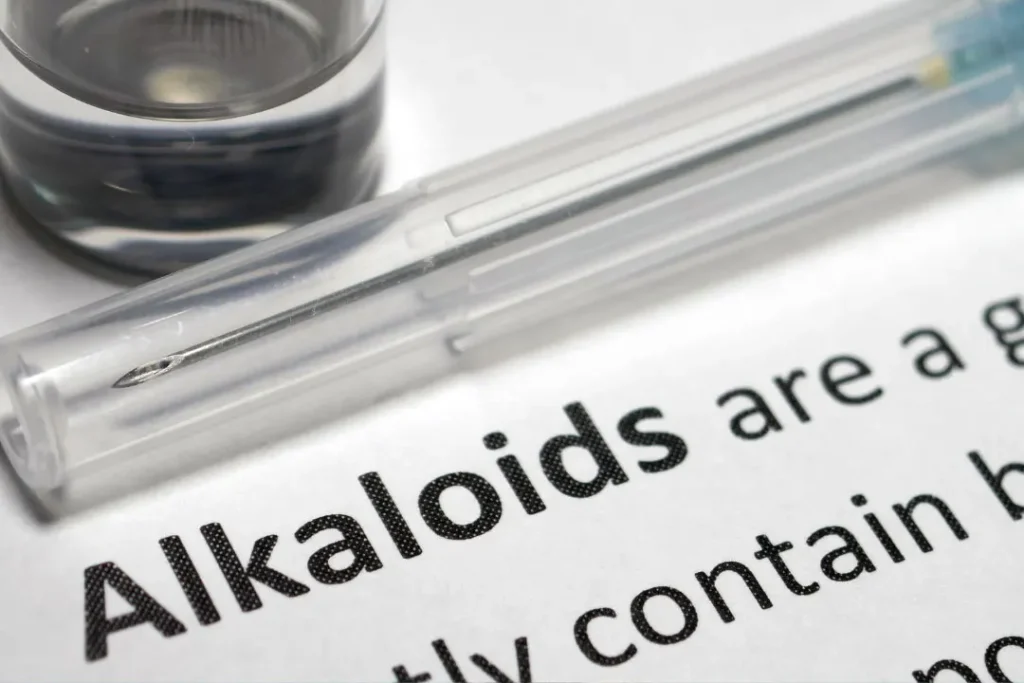The intriguingly titled substance known as “Dragon’s Blood” is generated from a variety of different tree species, including Daemonorops draco (Palmae), Croton (Euphorbiaceae), and Dracaena (Dracaenaceae). The multiple therapeutic uses of this scarlet resin, which is typically obtained by cutting incisions into the tree trunk, have long been known. This essay does a thorough analysis of Dragon’s Blood, concentrating on its characteristics, health advantages, recommended dose, negative effects, possible drug interactions, and best use.
You May Also Like:
Cognitive Health Extra Strength Supplement vs Medicine Man Plant Co.’s The Brain Pill
Cup Plant: Benefits, Dosage, Side Effects, Drug Interactions, and Other Important Information
Dragon’s Blood: Benefits, Dosage, Side Effects, Drug Interactions, and Other Important Information is an original (NootropicsPlanet) article.
Nature of Dragon’s Blood
Dragon’s Blood is a brilliant crimson resin that comes from a variety of tree species that are mostly found in South America, China, and the Canary Islands. It has a nice, somewhat sweet aroma. Whatever its origin, the resin has a similar chemical composition that is set apart by a variety of physiologically active substances.
Proanthocyanidins, also known as condensed tannins, are the main component in Dragon’s Blood. These are basically polyphenols, which are well-known for their strong antioxidant properties. Dragon’s Blood is also rich in sterols, terpenoids, alkaloids, and flavonoids.

Health Benefits of Dragon’s Blood
The astonishing range of health advantages that Dragon’s Blood offers is mostly due to its high concentration of bioactive chemicals. Proanthocyanidins are responsible for their powerful antioxidant effects, which reduce the risk of chronic illnesses and oxidative stress.
Additionally, Dragon’s Blood has substantial anti-inflammatory properties that might be beneficial in treating diseases including dermatitis, colitis, and arthritis. Flavonoids and terpenoids found in Dragon’s Blood may increase its effectiveness given that they are well-known for their anti-inflammatory properties.
Additionally, due to its antibacterial qualities, Dragon’s Blood has been utilized for millennia as a wound-healing agent. Recent studies confirm this application and demonstrate the resin’s potency against a variety of diseases, including bacteria, fungi, and viruses.

Chemistry of Dragon’s Blood
The chemical makeup of Dragon’s Blood is intricate and full of bioactive substances which include proanthocyanidins, flavonoids, sterols, terpenoids, and alkaloids.
As previously stated, condensed tannins are polyphenolic substances with strong antioxidant properties. They are thought to be the primary bioactive component in Dragon’s Blood, giving it its distinctive red hue.
Another class of polyphenols found in the resin are flavonoids. Flavonoids are said to provide numerous health advantages with their anti-inflammatory and anticancer properties. Beta-sitosterol is one of several sterols found in Dragon’s Blood that may have anti-inflammatory and cholesterol-lowering properties.
Although present in smaller quantities, terpenoids and alkaloids contribute to the resin’s antibacterial and analgesic characteristics. These bioactive substances help explain the great range of health advantages of Dragon’s Blood.

Physiological Mechanisms of Action of Dragon’s Blood
The interactions of Dragon’s Blood’s bioactive chemicals with the body are principally responsible for its therapeutic effects on the body.
Proanthocyanidins work as strong antioxidants to combat damaging free radicals in the body. These substances assist in preventing cell damage and lowering the risk of chronic illnesses including cancer, heart disease, and neurological disorders by decreasing oxidative stress.
The flavonoids and sterols are known to control the body’s inflammatory response. Their possible mode of action is preventing the release of cytokines that promote inflammation, which accounts for the resin’s effectiveness in treating different inflammatory diseases.
The terpenoids and alkaloids in Dragon’s Blood are said to have antibacterial qualities because they may damage pathogens’ cellular structures, which prevents the pathogens from growing and spreading. Due to this, Dragon’s Blood works well to treat infections, especially when administered directly to skin lesions and open wounds.
Overall, the complex and numerous processes behind Dragon’s Blood’s health advantages show the resin’s promise as a therapeutic agent. To completely understand the physiological effects of Dragon’s Blood and its specific routes or processes in play, more study is necessary.

Optimal Dosage of Dragon’s Blood
Due to differences in source, preparation, and individual health circumstances, there is no set suggested dose for Dragon’s Blood. It is frequently taken orally in the form of capsules as a dietary supplement or used topically to skin wounds in a diluted form. To determine the proper dose depending on individual health needs, a healthcare professional should be consulted.
Side Effects of Dragon’s Blood
Dragon’s Blood is typically harmless when taken properly, but it can have negative effects occasionally. The resin may cause allergic responses in certain people, causing skin rashes or irritation.
Potential Substance Interactions with Dragon’s Blood
There are currently no known drug interactions with Dragon’s Blood. However, if you are taking any medication or has certain medical issues, you should discuss the use of resin with your healthcare professional due to the resin’s complicated chemical makeup and possible substance interactions.
Responsible and Best Uses of Dragon’s Blood
Dragon’s Blood might be a useful supplement to one’s wellness regimen given its extensive health possibilities. Dragon’s Blood may be applied topically to promote skin health and wound healing, and it can also be taken orally as a supplement for potential anti-inflammatory and antioxidant effects.
However, it is crucial to utilize Dragon’s Blood properly, just as with other dietary supplements. It is advised to select goods from reliable producers due to the variety in their source and preparation. Furthermore, in order to guarantee its safe and efficient usage based on specific health needs, contact with a healthcare professional is imperative.
Dragon’s Blood:
Conclusion
Dragon’s Blood is derived from various tree species such as Daemonorops draco (Palmae), Croton (Euphorbiaceae), and Dracaena (Dracaenaceae), and it has gained attention for its potential health benefits. Its unique name “Dragon’s Blood” comes from its vibrant red color and resinous texture. Dragon’s Blood is jam-packed with high concentrations of bioactive chemicals and can be used to prevent chronic illnesses. It is also believed to possess antimicrobial and anti-inflammatory effects, making it valuable for topical applications as a wound-healing agent.
While further research is needed to fully explore its therapeutic potential, Dragon’s Blood presents an intriguing substance with diverse applications. As with any natural remedy, it is important for you to consult with healthcare professionals for personalized advice and guidance on its safe and appropriate usage.
References:
- Dragon’s Blood: Botany, Chemistry and Therapeutic Uses. Retrieved from: https://www.researchgate.net/publication/5786935_Dragon’s_blood_Botany_chemistry_and_therapeutic_uses#:~:text=Abstract,%2Dinflammatory%2C%20antioxidant%2C%20etc.
- Dragon’s Blood from Dracaena Worldwide: Species, Traditional Uses, Phytochemistry, and Pharmacology. Retrieved from: https://pubmed.ncbi.nlm.nih.gov/34247562/
Dragon’s Blood: antioxidant properties for nutraceuticals and pharmaceuticals. Retrieved from: https://link.springer.com/article/10.1007/s12210-022-01122-4
Important Note: The information contained in this article is for general informational purposes only, and should not be construed as health or medical advice, nor is it intended to diagnose, prevent, treat, or cure any disease or health condition. Before embarking on any diet, fitness regimen, or program of nutritional supplementation, it is advisable to consult your healthcare professional in order to determine its safety and probable efficacy in terms of your individual state of health.
Regarding Nutritional Supplements Or Other Non-Prescription Health Products: If any nutritional supplements or other non-prescription health products are mentioned in the foregoing article, any claims or statements made about them have not been evaluated by the U.S. Food and Drug Administration, and such nutritional supplements or other health products are not intended to diagnose, treat, cure, or prevent any disease.


